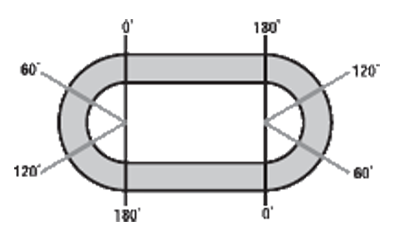QA1 Shocks Circle Track Tuning Tips
QA1 revalveable shocks are unique in that you can custom valve your shocks for your particular application. QA1 valving is predictably spaced from one valving to the next, so you can be certain that when you make a change it is going to be correctly reflected in the performance of the shock. QA1 tuning kits come with pistons (large body), seals, base valves (large body), drill bits, a wide assortment of deflective discs, and easy-to-follow instructions. Best of all, they are so simple to use that you can often change your valving in less than ten minutes per shock! See page 25 for more information on the QA1 tuning kits. The following template was designed to assist you in breaking down the corner into three main areas. First, establish what handling characteristic your car possesses, then, using the template, determine in what area of the corner you are experiencing the problem. Follow the recommended adjustments in order to optimize your vehicle’s cornering potential.

0° thru 60° Corner Entry
Problem: Loose at turn entry
- Increase compression on front or right front
- Decrease rebound in left rear
- Decrease compression on front or right front
- Increase rebound in left rear
Problem: Tight at turn entry
60° thru 120° Mid Corner
At most tracks this part of the corner is where the car has taken a set. Your braking is already done, your steering angle is constant and you are getting ready to pick up the throttle. Typically, your car’s handling characteristics are influenced by vehicle geometry and roll centers at this part of the track and less likely affected by shock valving.
120° thru 180° Corner Exit
Problem: Loose at turn exit
- Decrease rebound in right front
- Decrease compression in left rear
- Increase rebound on right front
- Increase compression on rear or right rear only
Problem: Tight at turn exit
Always start tuning by concentrating on the problem that happens first in the turn. for example, if you are loose exiting the turn, it is possible that it is happening because you are tight entering the turn. The extra steering input from trying to “drive through the push” could cause the car to seem loose at mid-corner and at exit. Once the “push” entering is fixed, the loose condition exiting the corner could go away.
Copyright © QA1 Motorsports


